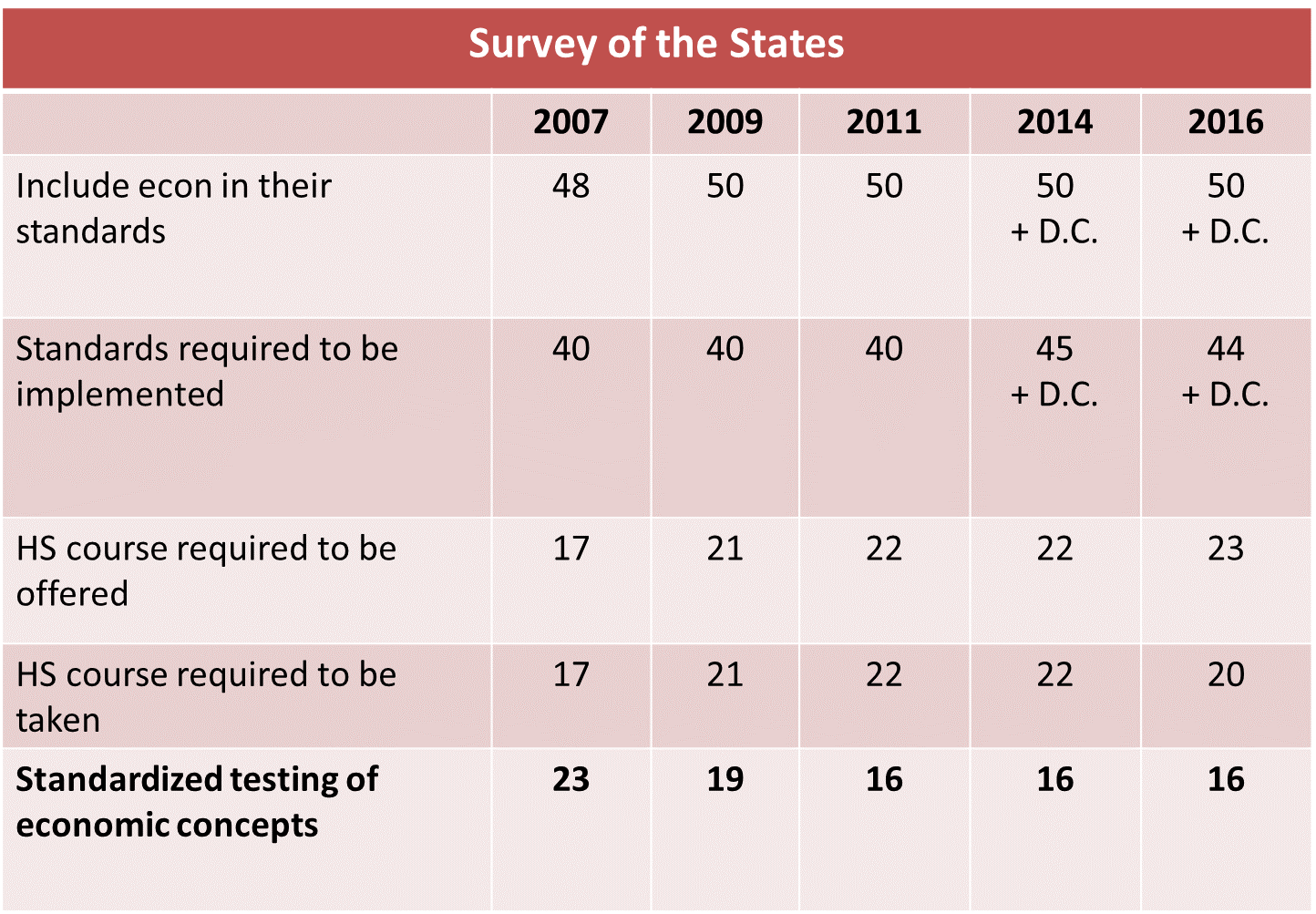Improving the State of Economic Education
AIER’s Teach-the-Teachers Initiative aims to educate young Americans about economic concepts through equipping their teachers to deliver engaging, relevant, and meaningful classroom instruction. Our program is called Economics Across the Curriculum because we emphasize the importance of infusing economic concepts in various subjects.
Every year, we ponder the state of economic education in the United States and the role of AIER in improving it. A book that just came out in 2017, entitled “Innovations in Economic Education,” edited by Mary Beth Henning, describes methods and pedagogical approaches as well as resources and assessment techniques proven to succeed in the classroom.
Chapter 6 of this volume, entitled “Teaching and Measuring the Economic Way of Thinking,” written by Ashley S. Harrison, J.R. Clark, and Mark C. Schug, resonates with our approach of engaging teachers in a discussion about their role in improving American grade school and university systems’ instruction on economic and financial literacy.
The chapter is full of evidence about the inadequate state of economic education. For example, “students in 24 states will spend only 1 out of 26 semesters in the traditional K-12 curriculum formally studying economics.” Even then, “for many high-school students, the course they take isn’t economics at all, but a personal finance and consumer education course with a few economic ideas tossed in.”
The shortcomings of the curriculum are magnified because social studies teachers are poorly prepared to teach economics, the authors assert. This shortcoming is because “these teachers typically have completed several college and university courses in history, plus a smattering of courses in other social science areas. They ordinarily have avoided coursework in economics.”
AIER had taken similar findings to heart when we created the Economics Across the Curriculum program. The goal is to teach several economic concepts and train the participating teachers in developing engaging pedagogical strategies and assessment methods. Because we continuously evaluate the impact of this program on teachers and students, we have evidence of a significant increase in knowledge of topics we teach at the workshop. I described quantitative and qualitative evidence from four years of running the program in several of my previous blogs.
This evidence supports the conclusion that AIER improves the economic knowledge of teachers and their students and therefore contributes to improving economic education in the United States. This is exactly what AIER’s founder, Col. E.C. Harwood, envisioned when he suggested allocating funds to the Educating the Educators project in 1971. Harwood considered this project a way of fulfilling the educational aspects of AIER’s mission.
Table above is being presented for discussion at our program. It is adopted from the Survey of the States, 2016. Council for Economic Education: http://councilforeconed.org/policy-and-advocacy/survey-of-the-states/
Click here to sign up for the Daily Economy weekly digest!









